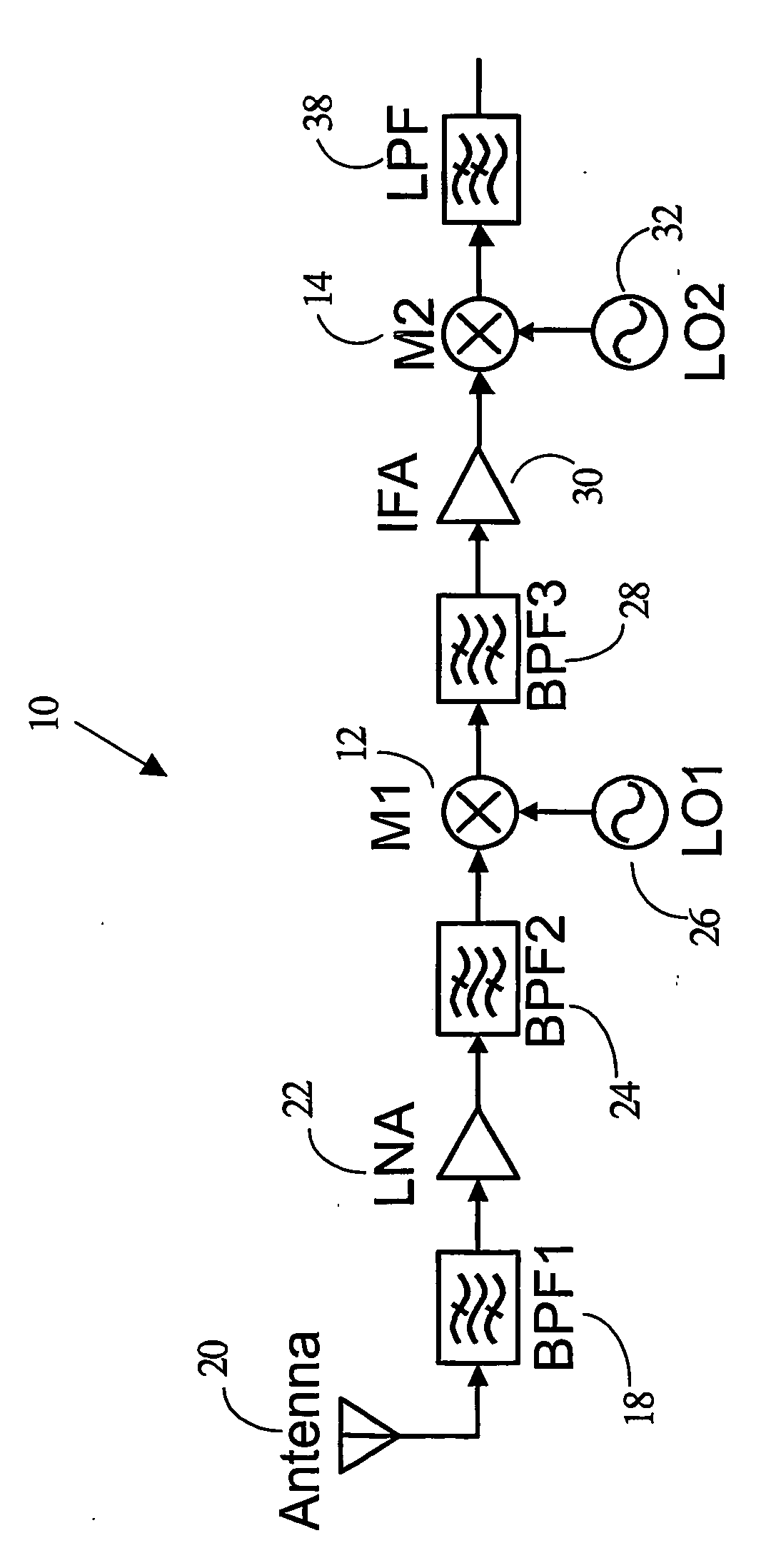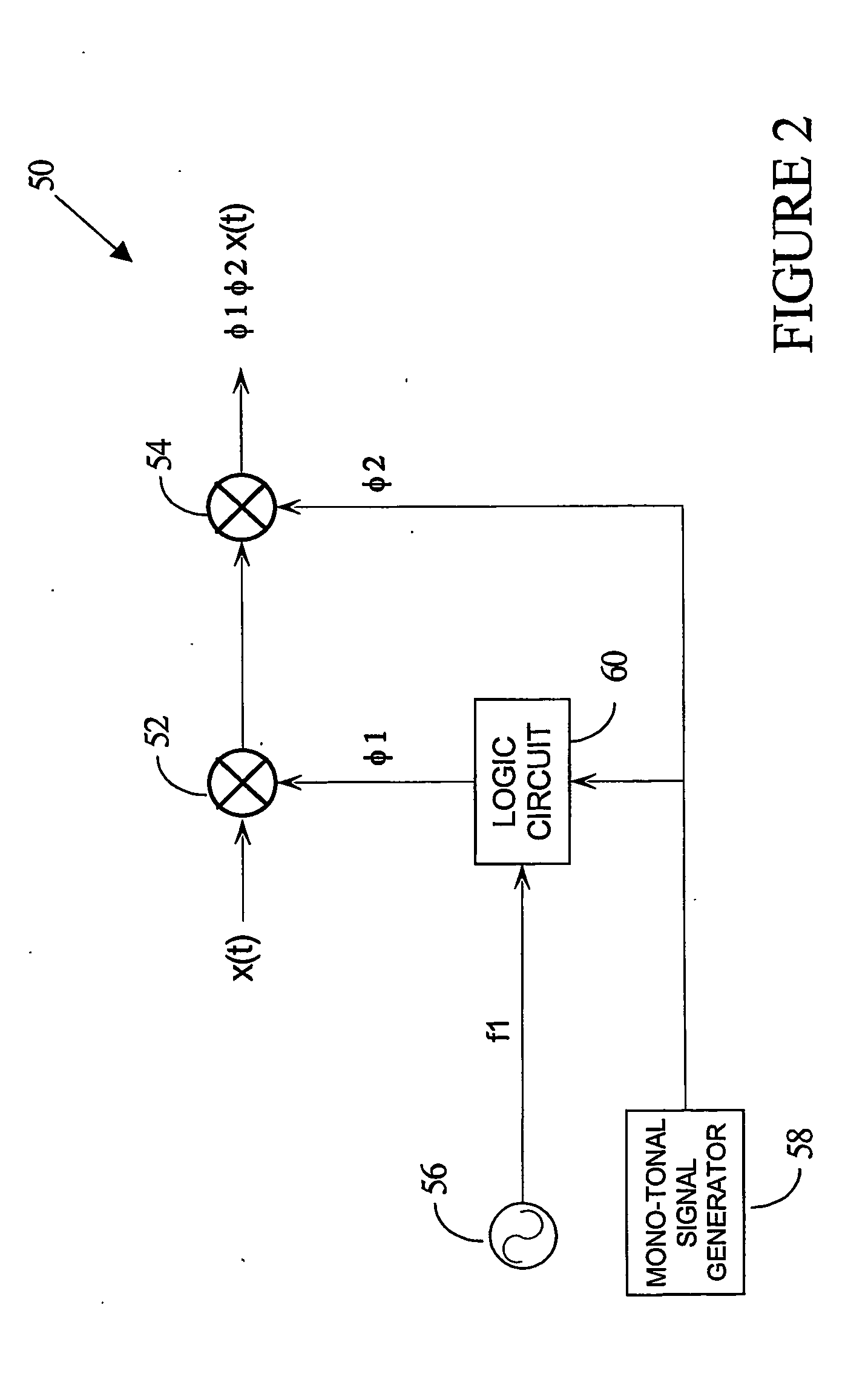Method and apparatus for down conversion of radio frequency (rf) signals
a radio frequency and signal technology, applied in the field of methods and apparatus for down conversion of radio frequency (rf) signals, can solve the problems of high cost of use in more sophisticated modern applications, poor performance, and inability to isolate from digital nois
- Summary
- Abstract
- Description
- Claims
- Application Information
AI Technical Summary
Benefits of technology
Problems solved by technology
Method used
Image
Examples
Embodiment Construction
[0042] A circuit which addresses a number of the objects outlined above is presented as a block diagram in FIG. 2. This figure presents a demodulator topology 50 in which an input signal x(t) is down-converted by mixing it with two mixing signals φ1 and β2. As will be described, these two mixing signals are φ1 and φ2 are very different from mixing signals used in normal two-step conversion topologies (such as superheterodyne topologies). The main difference from the direct-conversion approach is that two mixing signals of the invention are used emulate the single mixing signal, and they do this without the usual short comings of direct-conversion, such as self-mixing.
[0043] As shown in FIG. 2, the input signal x(t) is mixed with a multi-tonal mixing signal φ1 using a first mixer 52 (multi-tonal, or non-mono-tonal, refers to a signal having more than one fundamental frequency tone. Mono-tonal signals have one fundamental frequency tone and may have other tones that are harmonically ...
PUM
 Login to View More
Login to View More Abstract
Description
Claims
Application Information
 Login to View More
Login to View More - R&D
- Intellectual Property
- Life Sciences
- Materials
- Tech Scout
- Unparalleled Data Quality
- Higher Quality Content
- 60% Fewer Hallucinations
Browse by: Latest US Patents, China's latest patents, Technical Efficacy Thesaurus, Application Domain, Technology Topic, Popular Technical Reports.
© 2025 PatSnap. All rights reserved.Legal|Privacy policy|Modern Slavery Act Transparency Statement|Sitemap|About US| Contact US: help@patsnap.com



